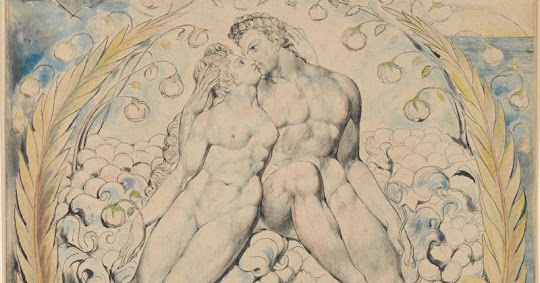Kiedyś na moim blogu opublikowałem podobny wpis z cytatami Faramira (zobacz "Tako rzecze Faramir"). Dziś chcę zaprezentować najmądrzejsze z mądrych (bo wszystkie są mądre) cytaty książkowego Gandalfa. W wyborze pomogli czytelnicy naszego serwisu Elendilion. Przy okazji prezentuję dwie grafiki Kasiopei, które przedstawiają Gandalfa Szarego. Pierwsza z grafik została zamówiona zimą 2022 u Artystki z funduszy mojego Patronite (do uczestnictwa w którym serdecznie Was zapraszam! - kliknij). Ten pierwszy Gandalf, narysowany jest zgodnie z opisem J. R. R. Tolkiena, który poznaliśmy dzięki publikacji książki The Nature of Midde-earth. Więcej o bezwąsym Gandalfie piszę na moim blogu "True Gandalf? No moustache". Drugi Gandalf to dawniejsza praca Kasiopei. Który Gandalf bardziej się wam podoba? Na pewno ten "nowy" Gandalf odbiega od zakodowanego nam przez film wyobrażenia. Spójrzcie jednak na wyraz jego twarzy. Pomyślmy, że słowa artykułowane przez odsłonięte usta lepiej docierają do słuchacza. Może o to chodziło Tolkienowi?
Więcej grafik Kasiopei znajdziecie tutaj: "The Art of Katarzyna Chmiel-Gugulska". Inna grafika zamówiona przeze mnie u Kasiopei to "Standing Silence" (zobacz grafikę i opis).
Cytaty za Władcą Pierścieni w tłumaczeniu Marii Skibniewskiej (Muza SA).
 |
| Gandalf - rys. Kasiopea (Katarzyna Chmiel-Gugulska, 2022) |
«Od nas zależy jedynie użytek, jaki zechcemy zrobić z darowanych nam lat»
(Drużyna Pierścienia, str. 79; ang. All we have to decide is what to do with the time that is given us)«Nie powiem: nie płaczcie, bo nie wszystkie łzy są złe»
(Powrót Króla, str. 387; I will not say: do not weep; for not all tears are an evil)«A kto psuje jakąś rzecz, żeby lepiej poznać jej istotę, ten zbacza ze ścieżek mądrości»
(Drużyna Pierścienia, str. 343; He that breaks a thing to find out what it is has left the path of wisdom)«Wielu spośród żyjących zasługuje na śmierć. A niejeden z tych, którzy umierają, zasługuje na życie. Czy możesz ich nim obdarzyć? Nie bądź więc tak pochopny w ferowaniu wyroków śmierci. Nawet bowiem najmądrzejszy z Mędrców nie wszystko wie.»
(Drużyna Pierścienia, str. 90; Many that live deserve death. And some that die deserve life. Can you give it to them? Then do not be too eager to deal out death in judgement. For even the very wise cannot see all ends.)«Nie, to nie rozpacz, bo rozpaczać mogą tylko ci, którzy przewidują koniec i nie mają co do niego żadnych wątpliwości. Ale my nie wiemy, jaki będzie koniec»
(Drużyna Pierścienia, str. 357; It is not despair, for despair is only for those who see the end beyond all doubt. We do not)«Zdrajcy zwykle bywają podejrzliwi»
(Dwie Wieże, str. 231; The treacherous are ever distrustful)(Powrót Króla, str. 192; Other evils there are that may come; for Sauron is himself but a servant or emissary. Yet it is not our part to master all the tides of the world, but to do what is in us for the succour of those years wherein we are set, uprooting the evil in the fields that we know, so that those who live after may have clean earth to till. What weather they shall have is not ours to rule)
«Inne siły zła mogą się pojawić, bo Sauron też jest tylko sługą czy też wysłannikiem. Ale nie do nas należy panowanie nad wszystkimi erami tego świata; my mamy za zadanie zrobić, co w naszej mocy, dla epoki, w której żyjemy, wytrzebić zło ze znanego nam pola, aby przekazać następcom rolę czysta, gotową do uprawy. Jaka im będzie sprzyjała pogoda, to już nie nasza rzecz i na to nie możemy mieć wpływu.»«Nie przejdziesz! Jam jest sługa Tajemnego Ognia, władam płomieniem Anoru. Nie przejdziesz. Czarny ogień na nic ci się nie przyda, płomieniu Udûnu. Wracaj w cień! Nie przejdziesz!»
Drużyna Pierścienia, str. 434; I am a servant of the Secret Fire, wielder of the flame of Anor. You cannot pass. The dark fire will not avail you, flame of Udûn. Go back to the Shadow! You cannot pass)
Może chcielibyście dodać jakieś cytaty z książek Tolkiena? Piszcie, proszę, w komentarzach!
 |
| Gandalf - rys. Kasiopea (Katarzyna Chmiel-Gugulska) |




















